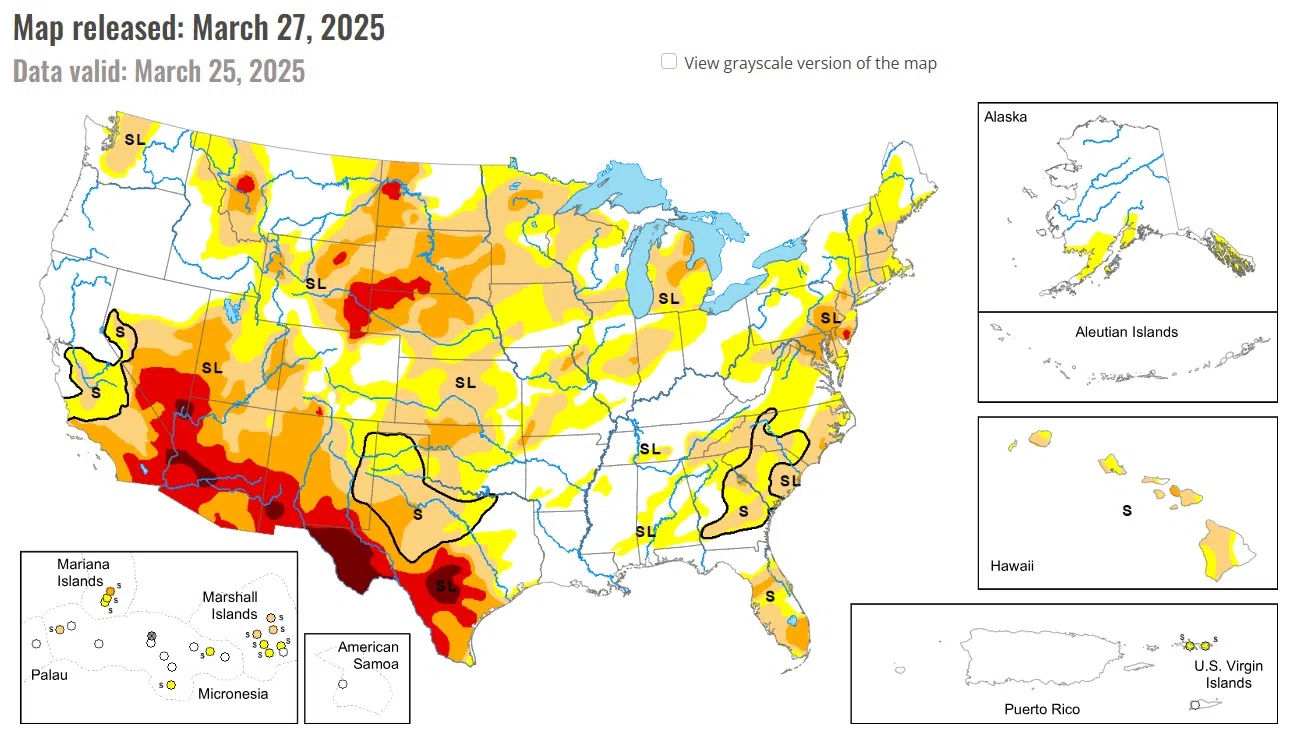Major storm systems continued to “undercut” the Dakotas and portions of neighboring states, according to the latest U.S. Drought Monitor update from the National Drought Mitigation Center.
Notably, severe drought (D2) was broadly expanded in South Dakota, where season-to-date snowfall totals were broadly at least 1 to 2 feet below average. With the northern Plains’ drought occurring at multiple time scales, current impacts include poor conditions for rangeland, pastures, and winter wheat. In contrast, late-season storminess across the northern Intermountain West, including much of northern and western Wyoming, led to improved mountain snowpack, more favorable spring and summer runoff prospects, and reductions in drought coverage and intensity.
With a band of snow cutting across the Midwest on March 19-20, followed by some additional precipitation, there were targeted improvements to the drought depiction, mainly from Iowa to Michigan. However, some areas farther north and south saw drought deterioration, most prominently across southern Missouri. A patch of severe drought (D2) was introduced in southwestern Missouri, extending into neighboring areas of northwestern Arkansas and northeastern Oklahoma.
Drought-related impacts further spread and intensified across parts of Texas and Oklahoma, amid March winds, dust, and dryness. In fact, two previously separate areas of drought were connected across Texas and Oklahoma. Meanwhile, little rain has fallen since mid-February across Arkansas and portions of neighboring states.
While the short-term dryness has been favorable for spring fieldwork, rain will soon be needed across the mid-South for pastures, fall-sown small grains, and recently planted summer crops. In Arkansas, 10% of the corn and 2% of the rice had been planted by March 23, while 7% of the winter wheat had headed. Pastures in Arkansas—rated 27% very poor to poor on March 23—were just starting to exhibit some stress from short-term dryness. On that date, rangeland and pastures in Texas were in much worse shape (71% very poor to poor), reflecting drought at multiple time scales and the impact of recent blowing dust.
National Drought Mitigation Center, University of Nebraska-Lincoln




Comments